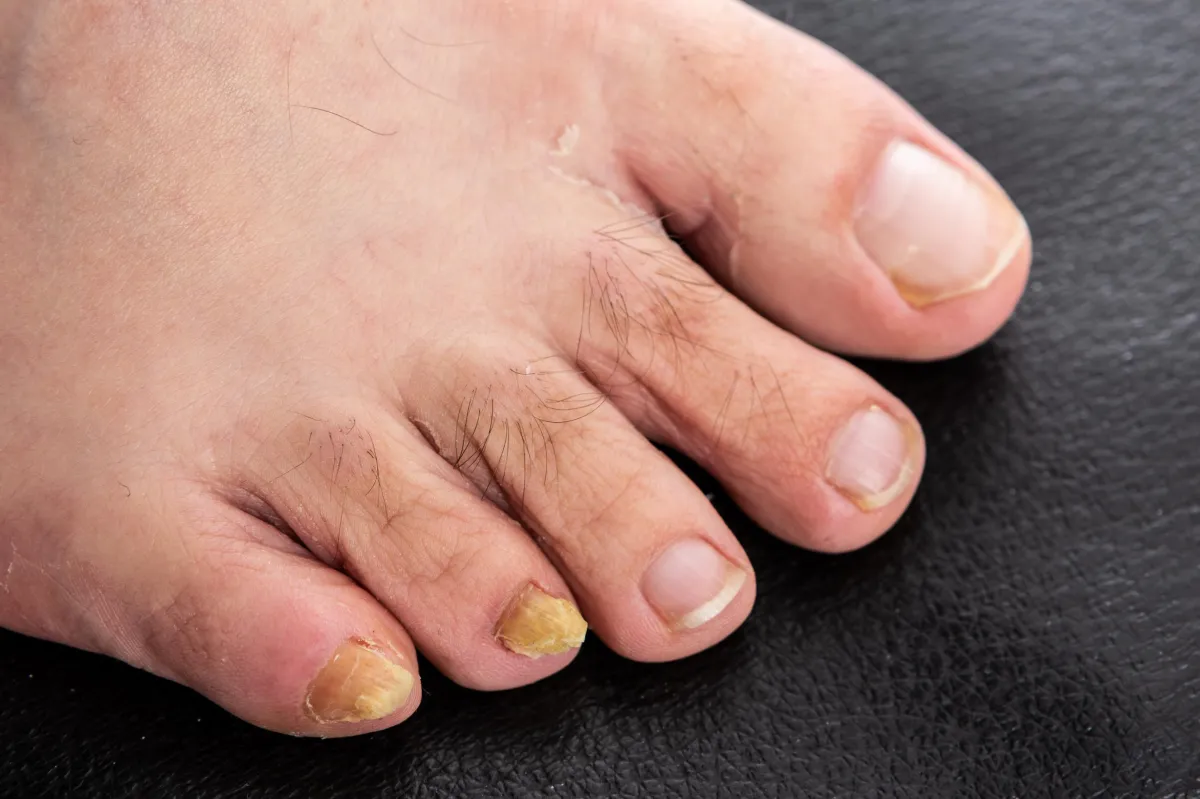
Comprehensive Treatment Options for Fungal Infections of the Feet
From Itchy Toes to Healthy Soles
Fungal foot infections might start small—an itch, a crack, or a flaky patch—but they can quickly become persistent, stubborn, and frustrating. Whether you're dealing with athlete’s foot or fungal nail infections, effective treatment goes beyond over-the-counter creams.
This blog explores the full range of treatment options available, from self-care to cutting-edge clinical interventions—so you can get back to healthy, clear, and comfortable feet.
Step 1: Identify the Type of Fungal Infection
Effective treatment starts with the right diagnosis. The two most common types are:
1. Athlete’s Foot (Tinea Pedis)
Affects the skin between the toes or soles
Causes itching, flaking, and sometimes a burning sensation
2. Fungal Nail Infection (Onychomycosis)
Causes discoloured, thick, brittle nails
Can spread from untreated athlete’s foot or direct trauma
Different infections require different treatment intensities.
Step 2: Start With Hygiene and Environment
Regardless of the severity, every treatment plan should include:
Daily foot washing with gentle antibacterial soap
Complete drying, especially between the toes
Changing socks daily, using breathable materials
Disinfecting shoes, using sprays or UV light
Avoiding barefoot use in communal spaces
Treating the foot without treating the environment often leads to reinfection.
Step 3: Over-the-Counter Antifungals
For mild to moderate cases of athlete’s foot:
Creams, sprays, and powders (e.g. terbinafine, clotrimazole)
Apply for 2–4 weeks even after symptoms disappear
Ideal for early stages or preventing recurrence
For fungal nails:
Antifungal nail lacquers (e.g. amorolfine) can help mild infections
Apply once or twice weekly for several months
These are a good starting point—but often not enough alone.
Step 4: Prescription Treatments
For more stubborn or recurring infections:
Oral antifungals (e.g. terbinafine tablets) target infection systemically
Topical prescription creams may be stronger and faster-acting
Your GP or podiatrist can assess suitability, especially for nail infections
Oral medications are often recommended for moderate-to-severe fungal nails and require regular liver function checks.
Step 5: Advanced Podiatry Treatments
At clinics like We Fix Feet, we offer advanced solutions including:
🔬 Class IV Laser Therapy
Targets the fungus beneath the nail plate or skin
Painless, non-invasive, and safe for most patients
Typically requires several sessions for full results
🧪 Verrutop (for Children’s Verrucas)
Though not used for fungal nails, it’s worth noting that accurate diagnosis is key—verrucas and fungal infections can be confused
🦶 Nail Debridement
Gently removes thick, infected nail layers
Enhances penetration of topical treatments
Combined therapy often yields the best outcome.
Step 6: Custom Orthotics and Footwear Advice
Chronic fungal infections often coexist with foot structure issues like:
Excess sweating (hyperhidrosis)
Tight footwear causing nail trauma
Orthotics can help by:
Improving air circulation and reducing pressure
Supporting foot posture to avoid friction
Podiatrists may also recommend:
Footwear upgrades (breathable, antimicrobial insoles)
Anti-fungal shoe sprays
Step 7: Preventing Reinfection
Long-term success depends on consistent follow-up care:
Continue treatment until completely clear—not just when symptoms fade
Replace old socks and shoes where possible
Use antifungal sprays preventatively if prone to infection
Final Thoughts: There’s No One-Size-Fits-All Solution
Fungal infections can be frustrating, especially when they recur. But with the right combination of hygiene, medical treatment, and ongoing care, clear and healthy feet are entirely achievable.
Whether it’s an annoying itch or a thickened toenail that’s been bothering you for months—get it looked at. The sooner you act, the easier the recovery.
👣 Ready for expert treatment? Book your fungal foot assessment at www.wefixfeet.co.uk or call 0115 9328832.
Ask The We Fix Feet Team
Fill in the form to request a Call From Our Team
One of our team will call you for FREE and answer any questions or concerns you may have about your uncomfortable foot condition

Where To Find We Fix Feet
Our We Fix Feet podiatry clinics are conveniently located in Ilkeston, Derbyshire and Beeston, Nottinghamshire
Open: Mon-Fri 09:00-17:00 / Sat 09:00-13:00
94 Bath Street, Ilkeston, Derbyshire DE7 8FE
8 Wollaton Road, Beeston, Nottinghamshire NG9 2NR
Pay and display parking nearby




